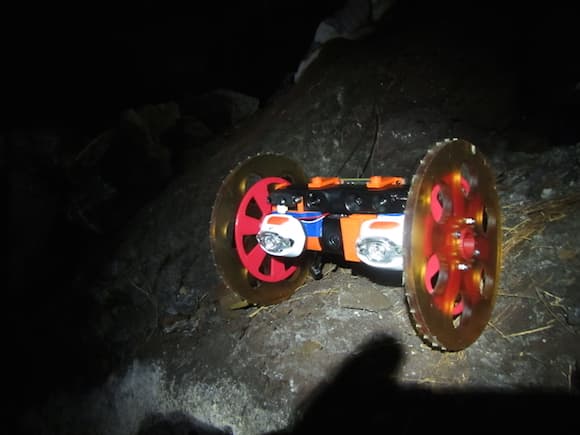VolcanoBot 2 From NASA To Study Volcanoes On Earth And Other Planets
Exploring volcanoes is a gargantuan, risky experiment that humans can't conduct without the help of robots. In come to the rescue the VolcanoBot designed and developed by NASA at its Jet Propulsion Laboratory (JPL) in Pasadena, California. The VolcanoBot 1 was tested last year at the Kilauea Volcano in Hawaiii. This year, a smaller and lighter version of the bot named VolcanoBot 2 is being readied. The team of scientists from JPL Robotics Research centre are therefore working on developing the bot so that it can get inside the crevices inside the volcano so as to explore its various geological features.
The information about the how and what of volcanoes is still very limited. Researchers and Geologists have come up with models that explain the theory, but they are all very simplified. With this project, NASA's JPL team hopes to develop a realistic model of the volcano's insides. The researchers are working together with engineers to find out the implications of not just volcanoes on the Earth but in the extraterrestrial space too.
On planets like Mercury, Europa and Enceladus, previously active volcanoes existed, reports suggest. The only thing the research team wants to find out is how the mechanism of volcanic eruption works. The spacecrafts sent by NASA over all these years have delivered rare and amazing pictures of caves and fissures caused by volcanoes on the Moon and the Mars. By understanding how volcanoes erupt here on Earth, the team hopes to move forward and study the extraterrestrial volcanoes some day.

VolcanoBot 1 at work.
Last year in May, the team sent VolcanoBot 1 to roll down a fissure (the crack formed during magma eruption) in the Kilauea volcano in Hawaii. During a period of 5 days, the VolcanoBot 1 descended the fissure down to 25 meter to create a 3D map. Though the research team couldn't make the robot go all the way down, they did have interesting revelations and were the first ones to be able to measure the magma from the inside at centimeter-scale accuracy.
With VolcanoBot 2, the researcher duo from JPL hope to build a smaller lightweight bot with stronger electrical communications and motors that not only send back data more efficiently to the surface, but also move around the fissure with increased agility. A 3-D sensor live video feed will help the robot's navigation process. The team has already started working on the version 2 and hope to test it at at Kilauea in early March.
Source: <a href="https://www.nasa.gov/jpl/nasa-robot-plunges-into-volcano-to-explore-fissure/#.VK5ICYoaxLY" target="_blank" rel="noopener noreferrer">NASA Robot Plunges Into Volcano to Explore Fissure | NASA</a>
The information about the how and what of volcanoes is still very limited. Researchers and Geologists have come up with models that explain the theory, but they are all very simplified. With this project, NASA's JPL team hopes to develop a realistic model of the volcano's insides. The researchers are working together with engineers to find out the implications of not just volcanoes on the Earth but in the extraterrestrial space too.
On planets like Mercury, Europa and Enceladus, previously active volcanoes existed, reports suggest. The only thing the research team wants to find out is how the mechanism of volcanic eruption works. The spacecrafts sent by NASA over all these years have delivered rare and amazing pictures of caves and fissures caused by volcanoes on the Moon and the Mars. By understanding how volcanoes erupt here on Earth, the team hopes to move forward and study the extraterrestrial volcanoes some day.

VolcanoBot 1 at work.
Last year in May, the team sent VolcanoBot 1 to roll down a fissure (the crack formed during magma eruption) in the Kilauea volcano in Hawaii. During a period of 5 days, the VolcanoBot 1 descended the fissure down to 25 meter to create a 3D map. Though the research team couldn't make the robot go all the way down, they did have interesting revelations and were the first ones to be able to measure the magma from the inside at centimeter-scale accuracy.
With VolcanoBot 2, the researcher duo from JPL hope to build a smaller lightweight bot with stronger electrical communications and motors that not only send back data more efficiently to the surface, but also move around the fissure with increased agility. A 3-D sensor live video feed will help the robot's navigation process. The team has already started working on the version 2 and hope to test it at at Kilauea in early March.
Source: <a href="https://www.nasa.gov/jpl/nasa-robot-plunges-into-volcano-to-explore-fissure/#.VK5ICYoaxLY" target="_blank" rel="noopener noreferrer">NASA Robot Plunges Into Volcano to Explore Fissure | NASA</a>
0

